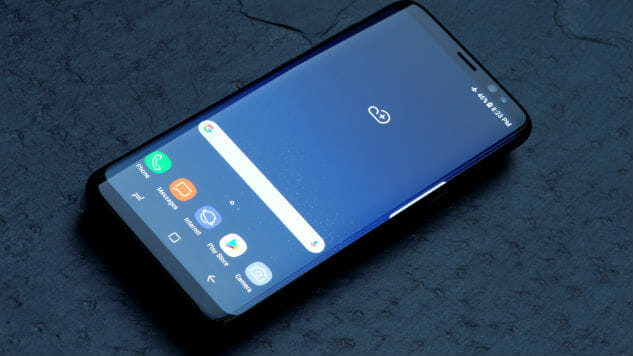The Mobile Gigabit: 5 Reasons Why You Should Care about the New Standard for Speed
Photo by Leszek Kobusinski / Shutterstock
The “mobile gigabit” may sound like a kind of post-apocalyptic tank, but in reality, it’s a new smartphone technology that’s about to revolutionize mobile devices.
The term came into existence to describe a piece of technology available in Samsung’s Galaxy S8 phone, but it’s also going to be included in Sony’s Xperia XZ phone and other high-end smartphones. If you’re plugged into the tech community, you probably get the sense that the mobile gigabit is a big deal—and it is—but you may not understand why.
These are just five of the reasons you should care about the mobile gigabit, and how the technology will develop from here:
1.Faster-than-ever speeds
The mobile gigabit is so named because it’s capable of downloading up to a gigabyte every second—that’s 1,000 megabytes per second (or 100-300 megabytes per second in “real” environments), which is faster than most consumers; home internet connections. Regardless of what you plan on doing with your mobile device, whether it’s streaming music, watching movies, or just playing mobile games, that connection speed is going to be luxurious.
Gradually, screen resolutions are moving toward 4k—ultra-high definition—and that requires more bandwidth than ever before. Still, even streaming ultra-high definition movies is no problem for a phone powered by a mobile gigabit—and you probably won’t experience any lag.
2. 256 QAM
Faster internet speeds are always something to be excited about, but there’s even more cause for excitement knowing why and how these speeds are possible. Historically, network providers have increased download speeds by using carrier aggregation, which is something like adding more lanes on a highway to accommodate more traffic. They’ve also been known to use a multiple-input, multiple-output method (MIMO) to “stack” those lanes on top of each other, using up to four separate radios and corresponding antennae.
Now, network providers are using 256 QAM, which stands for quadrature amplitude modulation, which increases the amount of data that can be carried in a single wave. It’s a new approach to increasing download speeds that may become even more valuable in the future.

Photo by John Moore / Staff / Getty Images.
3. The mobile gigabit sets a new standard
In the words of John Legere, the president and CEO of T-Mobile, “You know what happens when you combine the most advanced LTE network in the country with Samsung’s most powerful phone ever? An entire industry has to redefine the word ‘fast.’” Obviously, Legere is attempting to emphasize the power of his company’s upcoming product, but the message is true. Phone manufacturers and network providers are going to quickly fall behind if they don’t get on board with mobile gigabit-level speeds.
Though consumers have always dealt with a spectrum of different network speeds and reliability, carriers are always competing to bring better internet to their customers, and this is pushing the next step in advancement across the industry.
4. It’s going to open the door for new types of content
At the speeds promised by mobile gigabit connections, you could feasibly download a 2-hour movie in the span of just 15 seconds. That’s going to inspire a new wave of content creators to push the limits of what mobile devices can load and handle. For starters, that could mean full 360-degree streaming virtual reality experiences—panoramic views that contain many times more data than a single screen experience—but ones that blazing internet speeds like these could easily support.
It could also mean more support for app streaming, or the ability to “stream” in-app content without ever downloading the app to your phone; that could revolutionize how we use apps on a daily basis. The possibilities are endless.
5. 5G will not be impacted
For years, tech enthusiasts have been looking forward to the faster, more reliable connection speeds offered by 5G internet, the next generational phase in wireless evolution. However, the mobile gigabit is different than 5G internet—in fact, it’s more of a modification to existing 4G LTE wireless connections. Things get even more confusing when you discover that AT&T has branded its version of the mobile gigabit as “5G Evolution,” even though it isn’t 5G. Verizon and AT&T, along with a few other carriers, are planning to launch the first pieces of the 5G infrastructure later this year, and 5G standards themselves won’t be set until 2018. That means there’s an entire other generation of wireless to look forward to after the mobile gigabit rolls out.
Mobile gigabit isn’t fully available for consumers—yet—but most network providers are planning to make the shift by the end of the year. If you’re ready to download more complex content at faster speeds, start budgeting for a phone that’s ready to support gigabit connections; soon, you’ll have dozens of different models to choose from.







































